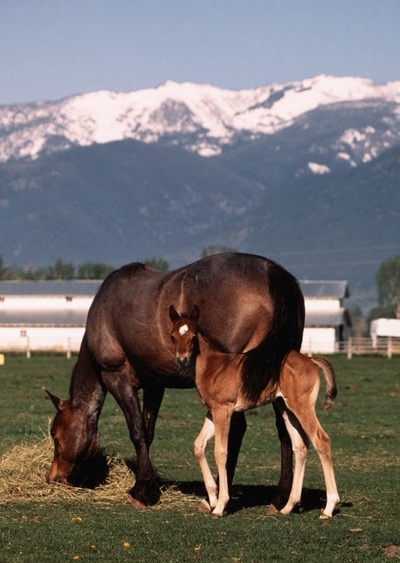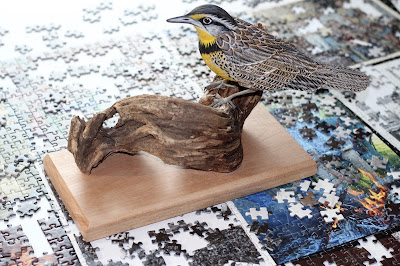cars and water. (Well, many dogs love water. Lapdogs? Perhaps not.) Here a Chesapeake Retriever displays his natural affinity in a local irrigation ditch.
Livestock and Landscapes
Rural scenes captured across the countryside and along country roads.
Friday, May 20, 2016
Sunday, May 1, 2016
This summer . . .
take in some dog events. There are all kinds involving courses and timed athletic events, herding competitions, and field and water trials. Google event schedules for the different breeds, whether herders, retrievers, or obstacle course runners.
Sunday, April 17, 2016
New on the Planet
Darlene Goehringer of Pop's Old Place found this Randall Lineback pair in the pasture recently. Pops Old Place Farm, Hurlock, Maryland, provides breeding stock, beef, and other foodstuffs to a local clientele. A more picturesque spring scene can hardly be imagined. Congratulations are in order.
Tuesday, April 5, 2016
Won't Be Long Now
Here is a nanny about to experience a blessed event. Goats are becoming more common in the Big Sky, the Keystone State, and all across the country. They are often companionable, offer the family milk, and usually amusing if a nuisance at times. They are clever about gates, like to climb trees, and just generally get into things.
Tuesday, March 15, 2016
Learning Business on a Dairy Farm
Victor Prince is a widely-known author, former COO, a consultant andspeaker who teaches strategy and leadership skills to clients around the world.
I grew up as a suburban kid. During my middle school summer breaks my parents used to ship me off to work at their family farms. I assumed they did it just to get a break from keeping me out of trouble. Looking back, I realize they also did it to teach me the lessons they both learned growing up on dairy farms. Those summers on the farm helped me in my career in ways my expensive MBA did not. Here are the lessons I learned as a dairy farm "intern."
1. What Hard Work Really Is - I've clocked 100 hour weeks in my consulting career and know how that feels. But in the middle of any crazy project, I knew I would get a break at some point. My dairy farmer family never got vacations, holidays or even weekends off. For 365 days a year they had to milk the cows morning and night, for the cows' sake and their own. Witnessing that gave my young self a perspective on what "hard work" looked like.
2. What a Good Colleague Looks Like - Of course some events like weddings or funerals forced dairy farmers to trade in their overalls for their one Sunday suit and take a day away from work. The cows don't take a break though, so the work still needed to be done. When one farmer missed a milking, it meant a neighbor did two milkings back to back without making a fuss.They simply knew colleagues are supposed to have each other's backs.
3. Calm Confidence is a Force Multiplier – A typical dairy cow weighs about 1500 pounds, or much more than ten-times what I weighed at the time. An animal that size could crush or kick the life out of me without even meaning harm. My uncles taught me to be safe. I taught myself how to control animals that size by projecting calm confidence.
4. Find Safe-Fail Teaching Opportunities - The thing I most enjoyed on the farm was getting to drive pickup trucks long before I was legally old enough. Looking back, I realize my uncles were carefully selecting what, where and how I got to drive. If they let me drive alone, it was only in off-road fields where the bumps slowed me long before my immature judgement did. And when I did inevitably dent a fender, it was on a beat up old truck. I felt so scared telling my uncle that I knew I never wanted to dent a car again.
5. Track Your Results - Cows produce an average of about 8 gallons (30 liters) of milk per day and my uncles milked about 25-30 cows. If their 500 gallon bulk tanks were at least 90% full when the dairy truck came every other day, they knew they were profitable. If it was lower, they knew they had to fix something quickly to get things back to break even. That taught me the value of frequent and concrete performance feedback as a way to ensure long term goals get achieved.
6. Internships as Gateways - My parents were the first in their families to go to college. As a result of their hard work, I grew up as a privileged suburban kid who was starting to be more focused on what clothes my classmates had than what kind of person I wanted to be. By exposing me to a world completely foreign to my suburban existence, I got perspective on where I was, where my parents had come from, and where I could be.Those summers introduced me to idols who wore overalls, and that has centered me for the rest of my career as I moved through more stylish circles.
Like most small dairy farms, both of my family dairy farms shut down years ago. As an MBA-trained capitalist, I understand why. That said, I remember those lessons well and I keep the old milk bucket I used as a daily reminder. I wish every future MBA and COO had a chance to work at a small family dairy farm for at least one summer.
Victor Prince, at age ten.
Victor Prince’s book, Lead Inside the Box: How Smart Leaders Guide their Teams to Exceptional Results, (Career Press, July, 2015) is now available at Amazon.com, Barnes & Noble and other retailers in paperback, Kindle, and Audio versions.
Sunday, February 28, 2016
Waiting for the Meadowlarks
A wonderful heirloom. From the Eastern Shore of Maryland comes this exquisite Western Meadowlark. WG the Carver creates these masterpieces, and this one shown above is somewhat of a departure from his other projects.
We've recently reconnected with this friend from our days together at Allegheny College, Meadville, Pennsylvania. Now living on Chesapeake Bay near Trappe, Maryland, WG devotes his talent to stunning depictions of waterfowl found in abundance there. His creations are normally large and life-sized and represent the highest tier of wildlife art. Yet, he occasionally works his wonders on a songbird.
This Western Meadowlark displays his exacting attention to detail and is life-size and so life-like, it's as if the bird flew in from the meadow to say hello.
Around here, we take bets on who will hear the first Meadowlark of spring. Some of us keep our acreage in sagebrush so these treasured friends will still have habitat to raise their young and bring pleasure to our lives with their song.
I thought it was perched on a chunk of sagebrush, but Bill says he's been keeping a piece of driftwood stashed over the years for just such a project. I think Mister or Missus Meadowlark likes it here.
Subscribe to:
Posts (Atom)






